Abstract
1. The effects of some muscarinic antagonists, namely, N-ethyl-2-pyrrolidylmethyl-cyclopentylphenyl glycollate (PMCG), N-methyl-4-piperidyl-phenylcyclohexyl glycollate (PPCG, racemate and R and S enantiomers) and 4'-N-methyl-piperidyl-1-phenyl-cyclopentane carboxylate (G3063) on organophosphate (sarin, soman)- and carbamate (neostigmine)-induced twitch augmentation have been studied in cat soleus muscle. 2. The results of a preliminary study comparing the potency of sarin and soman in inhibiting the acetylcholinesterase activity of muscle in relation to the effect on the maximal twitch response indicated that there is not a simple relationship between degree of enzyme inhibition by these drugs and alteration of muscle function. 3. The muscarinic antagonists studied were capable of preventing or reversing sarin-, soman- or neostigmine-induced twitch augmentation. Doses sufficient to give complete protection from the effects of the anticholinesterase agents had little or no effect on the twitch response of normal muscle. 4. The protective action of these muscarinic antagonists is dose-dependent but independent of known antagonist actions at muscarinic receptors. 5. The effects of some local anaesthetics (lignocaine, prilocaine, cinchocaine, procaine) and other membrane stabilizers (quinine, ketamine, chlorpromazine, triflupromazine) were compared with those of the muscarinic antagonists in an attempt to elucidate the mode of action of these acetylcholine antagonists. The evidence is insufficient to exclude the involvement of a membrane stabilizing action.
Full text
PDF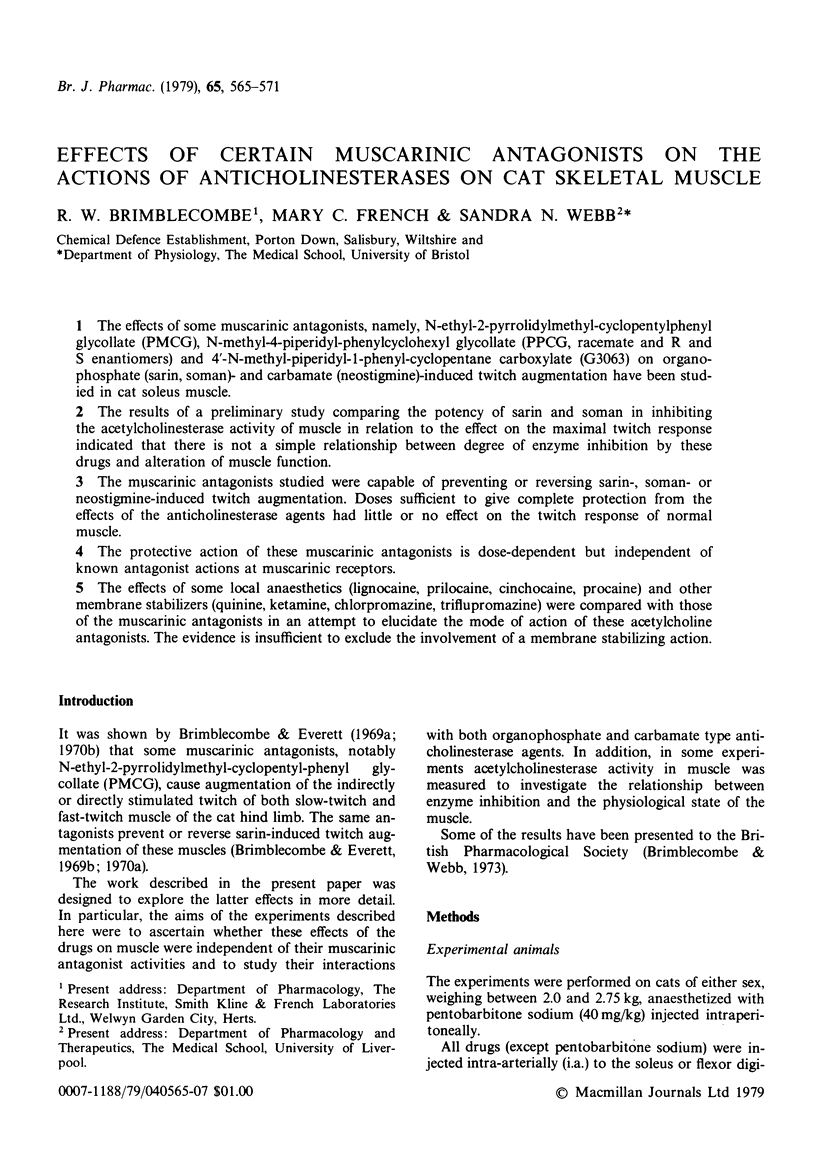
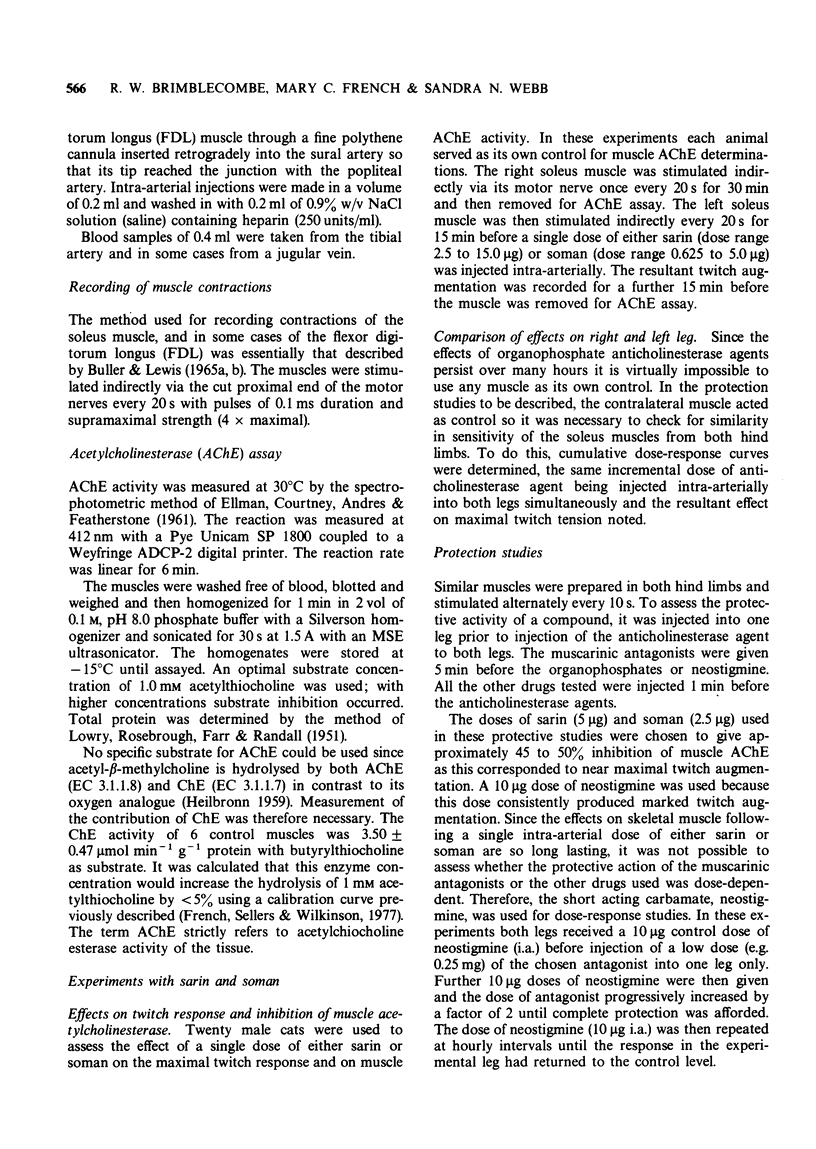
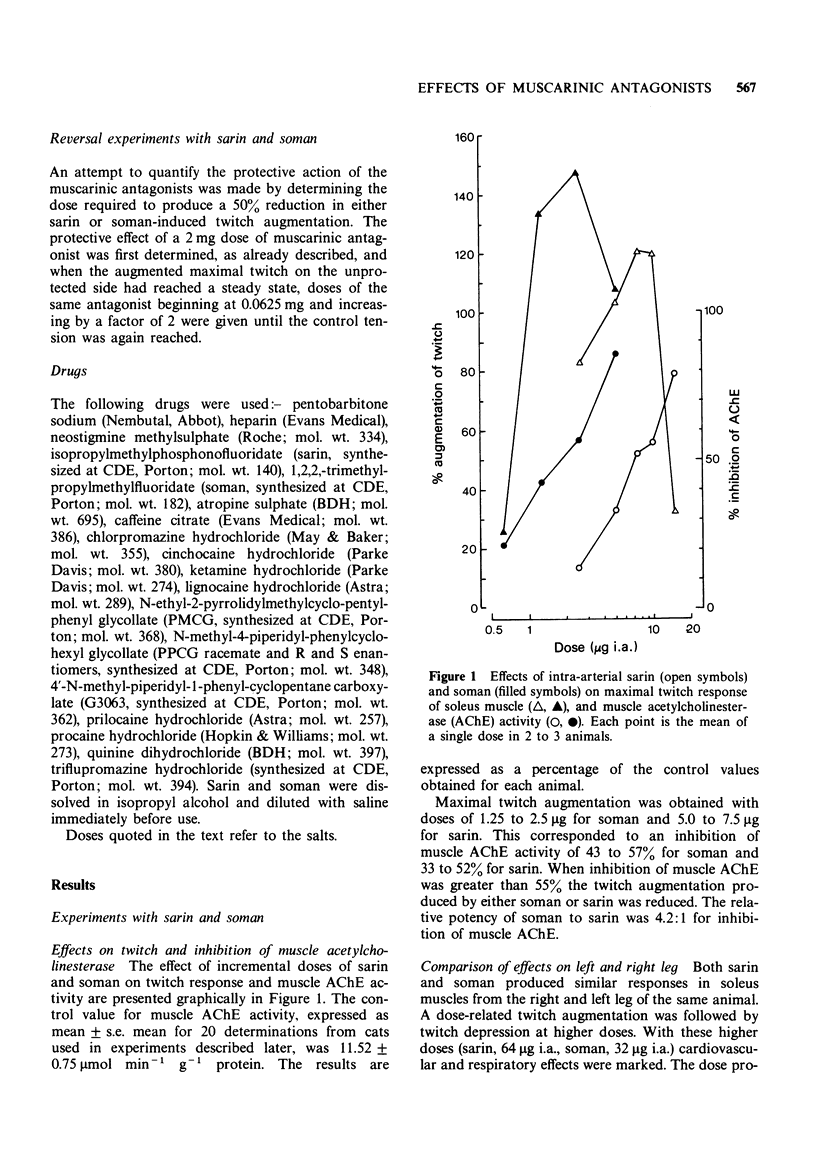

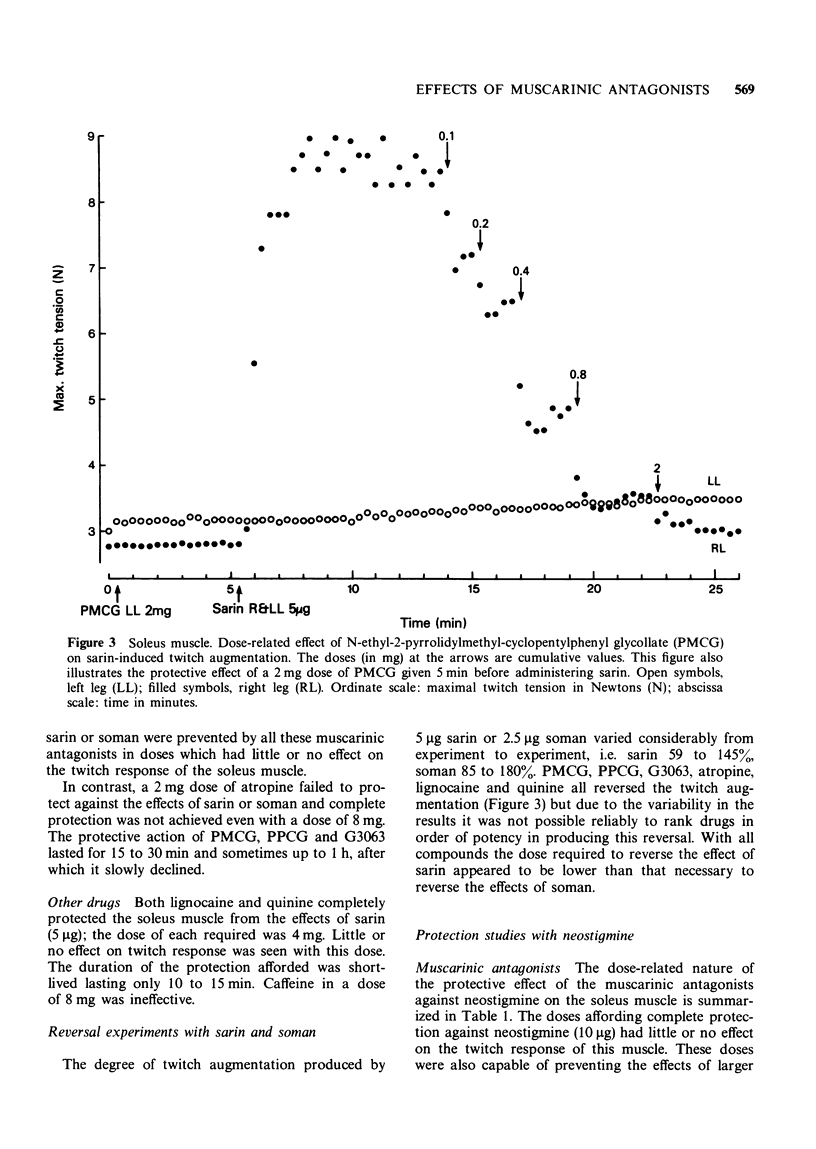
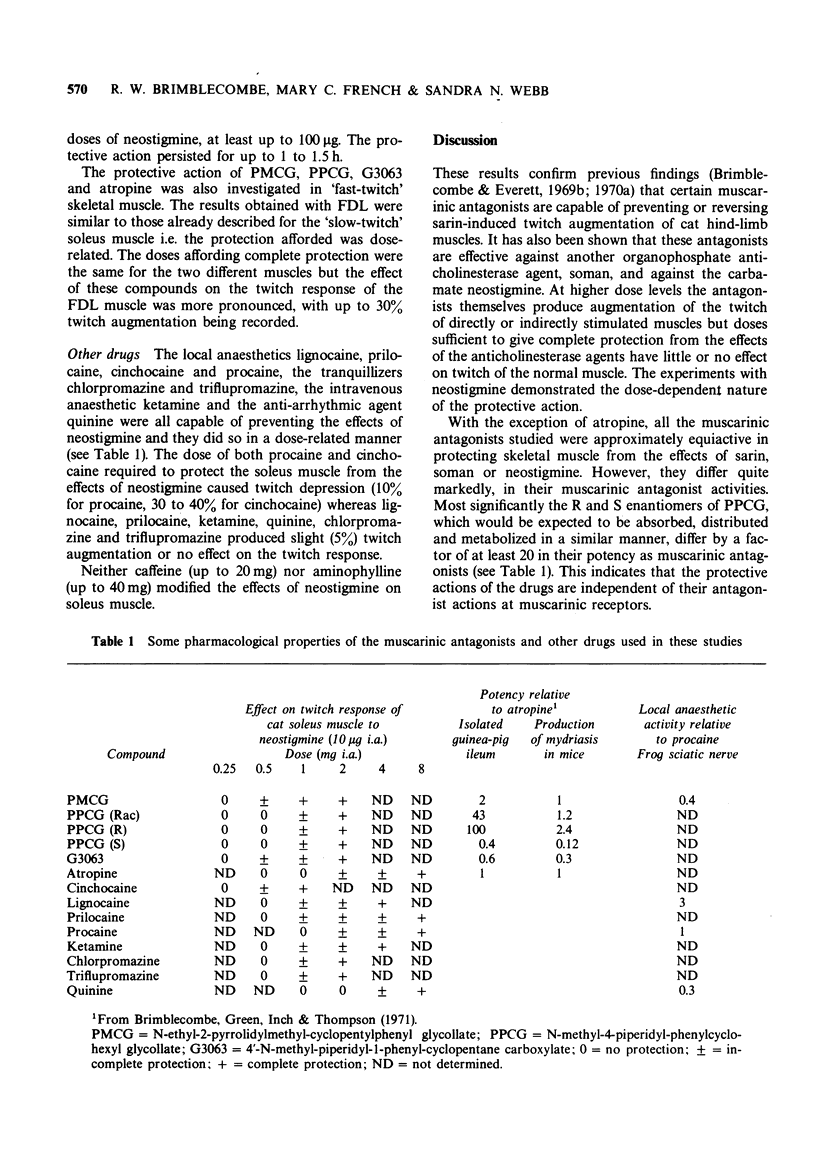
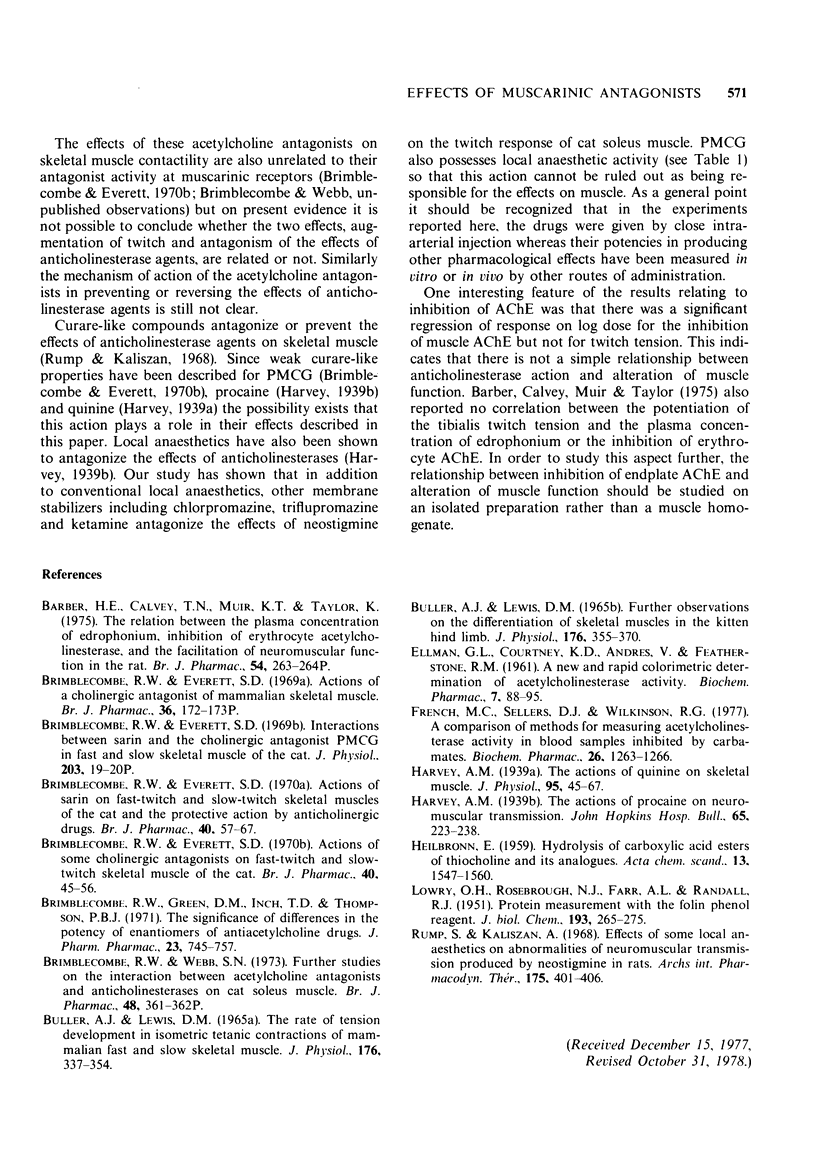
Selected References
These references are in PubMed. This may not be the complete list of references from this article.
- BULLER A. J., LEWIS D. M. FURTHER OBSERVATIONS ON THE DIFFERENTIATION OF SKELETAL MUSCLES IN THE KITTEN HIND LIMB. J Physiol. 1965 Feb;176:355–370. doi: 10.1113/jphysiol.1965.sp007555. [DOI] [PMC free article] [PubMed] [Google Scholar]
- BULLER A. J., LEWIS D. M. THE RATE OF TENSION DEVELOPMENT IN ISOMETRIC TETANIC CONTRACTIONS OF MAMMALIAN FAST AND SLOW SKELETAL MUSCLE. J Physiol. 1965 Feb;176:337–354. doi: 10.1113/jphysiol.1965.sp007554. [DOI] [PMC free article] [PubMed] [Google Scholar]
- Barber H. E., Calvey T. N., Muir K. T., Taylor K. Proceedings: The relation between the plasma concentration of edrophonium, inhibition of erythrocyte acetylcholinesterase, and the facilitation of neuromuscular function in the rat. Br J Pharmacol. 1975 Jun;54(2):263P–264P. [PMC free article] [PubMed] [Google Scholar]
- Brimblecombe R. W., Everett S. D. Actions of a cholinergic antagonist on mammalian skeletal muscle. Br J Pharmacol. 1969 May;36(1):172P–173P. [PMC free article] [PubMed] [Google Scholar]
- Brimblecombe R. W., Everett S. D. Actions of sarin on fast-twitch and slow-twitch skeletal muscles of the cat and protective action by anticholinergic drugs. Br J Pharmacol. 1970 Sep;40(1):57–67. doi: 10.1111/j.1476-5381.1970.tb10610.x. [DOI] [PMC free article] [PubMed] [Google Scholar]
- Brimblecombe R. W., Everett S. D. Actions of some cholinergic antagonists on fast-twitch and slow-twitch skeletal muscle of the cat. Br J Pharmacol. 1970 Sep;40(1):45–56. doi: 10.1111/j.1476-5381.1970.tb10609.x. [DOI] [PMC free article] [PubMed] [Google Scholar]
- Brimblecombe R. W., Green D. M., Inch T. D., Thompson P. B. The significance of differences in the potency of enantiomers of anti-acetylcholine drugs. J Pharm Pharmacol. 1971 Oct;23(10):745–757. doi: 10.1111/j.2042-7158.1971.tb08599.x. [DOI] [PubMed] [Google Scholar]
- Brimblecombe R. W., Webb S. N. Further studies on the interaction between acetylcholine antagonists and anticholinesterases on cat soleus muscle. Br J Pharmacol. 1973 Jun;48(2):361P–362P. [PMC free article] [PubMed] [Google Scholar]
- ELLMAN G. L., COURTNEY K. D., ANDRES V., Jr, FEATHER-STONE R. M. A new and rapid colorimetric determination of acetylcholinesterase activity. Biochem Pharmacol. 1961 Jul;7:88–95. doi: 10.1016/0006-2952(61)90145-9. [DOI] [PubMed] [Google Scholar]
- French M. C., Sellers D. J., Wilkinson R. G. A comparison of methods for measuring acetyl cholinesterase activity in blood samples inhibited by carbamates. Biochem Pharmacol. 1977 Jul 1;26(13):1263–1266. doi: 10.1016/0006-2952(77)90117-4. [DOI] [PubMed] [Google Scholar]
- Harvey A. M. The actions of quinine on skeletal muscle. J Physiol. 1939 Feb 14;95(1):45–67. doi: 10.1113/jphysiol.1939.sp003710. [DOI] [PMC free article] [PubMed] [Google Scholar]
- LOWRY O. H., ROSEBROUGH N. J., FARR A. L., RANDALL R. J. Protein measurement with the Folin phenol reagent. J Biol Chem. 1951 Nov;193(1):265–275. [PubMed] [Google Scholar]
- Rump S., Kaliszan A. Effects of some local anaesthetics on abnormalities of neuromuscular transmission produced by neostigamine in rats. Arch Int Pharmacodyn Ther. 1968 Oct;175(2):401–406. [PubMed] [Google Scholar]


